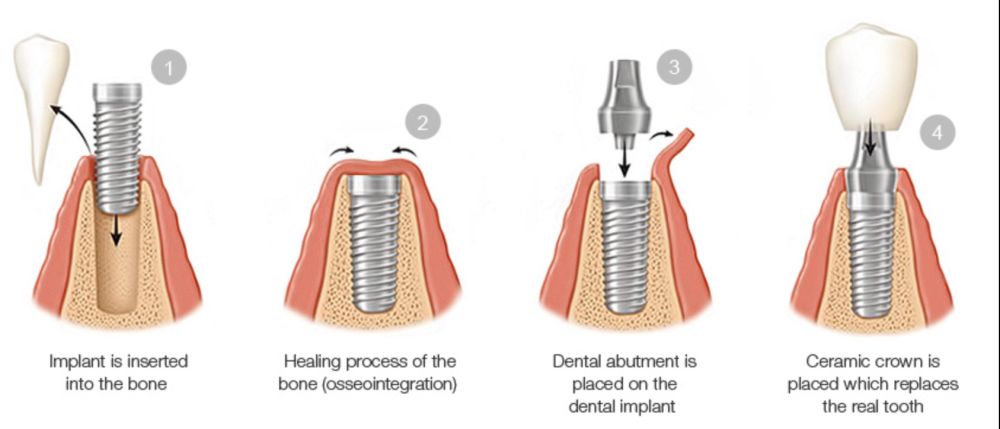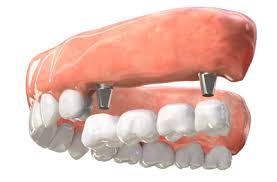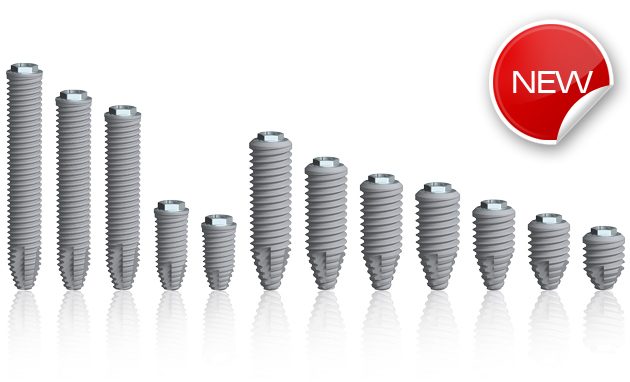Dental implantation is the root of the titanium body that is surgically placed by a cosmetic dentist to obtain a permanent replacement for teeth.
The dentist suggests an implant when the whole tooth is missing or removed. In recent times, Advance dentistry has a range of teeth restoration options. Still, implantation of the tooth is reliable. There is no dental replacement option that will give you permanent results.

11 Dental Implants Treatments
Baroda Dental Clinic Provides following Dental Implants Treatments
- FDA Approved Dental Implants
- Single-tooth Implants
- Basal Implantology
- Total Oral Rehabilitation
- Fix Teeth In 3 Days
- Sinus Lift & Bone Grafting
- Nerve Lateralization
- Ridge Augmentation
- All on 4 Implants
- All on 6 Implants
- Zygoma Implants
Process of Placing Dental Implants
A dental implant common often takes the form of a small, screw-shaped titanium post that replaces the root-part of a missing tooth.
The surgical procedure used to fix an implant is quite minor and routine, requiring only local anesthesia in most cases. After a healing period, the implant is covered with a lifelike crown custom-made to match your existing natural teeth.
Implants have a documented success rate of over 98%, which is significantly higher than any other tooth-replacement option.
Take a look “how dental implant take place?” in following figure

Single Tooth Implant
If you are losing a single tooth, one implant and a crown can replace it. A dental implant restores both the lost natural tooth and its root.
Preparation
First, the implant, which looks like a screw, is fixed into your jaw. Over the next two to six months, the implant and bone are conceded to bond together. And make an anchor for your artificial tooth. During this time, a short tooth replacement option can be worn over the implant site.
Healing
A Next step of the procedure is needed to uncover the implant and attach an extension. This temporary healing cap creates the foundation on which we will place the tooth. Your gums will be allowed to heal for a couple of weeks following this procedure.
New tooth
Finally, a replacement tooth named a crown will be built for you by your dentist and attached to a small alloy post, called an abutment. After a small-time, you will feel restored confidence in your smile and your ability to chew and speak. Dental implants are so natural-looking and feeling. You may forget you ever lost a tooth.
Multiple Teeth Implant
If you have multiple teeth loss, implants provide an ideal replacement mechanism. You don’t even require one implant for each missing tooth.
Instead, implant teeth can function as supports for fixed bridgework. For example, if you are missing four teeth in a row, we can place two implants, one on either side of the gap, and a crown in between that has no implant underneath. You won’t need to use any of your remaining natural teeth.
Basal Implant
An innovative and entirely new technique for dental implantation, where there is no need for bone augmentation in even critical cases.
They vary from traditional implants necessarily through the performance of the prosthetic structure and post-operative regime, but also in terms of their placing and force distribution. Also, the implants are one single unit and made of bio-compatible titanium metal.

Total Oral Rehabilitation
It may be the right alternative to addressing your needs if you think of full mouth reconstruction. The initial step is to visit our office for a consultation with one of our trained specialists.
At first, the method’s full scope requires a lot of preparation, commitment, and unique qualifications.

At Baroda Dental Clinic, We plan each stage of your treatment carefully. Modern computers can track jaw move with exceptional precision, which further enables us to lay the foundation for truly customized treatment.
Complete mouth reconstruction
The word “Full mouth rehabilitation” is applied to show extensive and intensive corrective procedures. Full mouth reconstruction is a great practical effort, and it represents the relationship and combination of all part into one functioning unit.
Fix Teeth In 3 Days
In conventional dental implants, the patient had to wait for at least 3 to 4 months for the implant to get fit into the bone, and then crown or cap is given over the implant.

Compared to conventional implants, the advanced strategic implant can reduce the time from months to hours. After, inserting the implant in the bone, crown, or cap is embedded in the mouth over implants within the next two days only.
So the main advantage of the “Fix teeth in 3 days” is that patient can function and eat from the 3rd day itself without any major surgery or complications. It may be time to come in and visit our expert
Sinus Lift & Bone Grafting
A sinus lift and Bone Grafting is a process that adds bone to your upper jaw in the area of your molars and premolars. It’s sometimes called a sinus augmentation.
We add bone between your jaw and the maxillary sinuses, which are on either side of your nose. We need to make room for the bones, so for doing that sinus membrane has to be moved upward or “lifted.” A sinus lift is usually done by a specialist.

Nerve Lateralization
Nerve lateralization is to avoiding nerve injury when placing implants in some situations. The surgeon has to re-position the inferior alveolar nerve laterally and then place the implants medial to the nerve.
The lateralization method for the inferior alveolar nerve (LIAN) provides for the placing of implants to improve the positioning. It also moves them closer to the ideal and raising the chance of direct view at the time of surgery.

Ridge Augmentation

Ridge Augmentation is a surgical procedure that increases the amount of alveolar ridge for implant placement.
It may use wall layers with or without bone replacements.
Return to the original site depends on the exclusion of soft tissue from osteogenic tissue (osteoblasts) during the organization of the bone.
Osteoblasts are mainly responsible for increasing the amount of regenerated alveolar ridge.
However, osteoblasts do not restore the alveolar ridge as quickly as epithelial and connective muscle cells grow.
The success of the Ridge Augmentation approach mainly depends on the exclusion of soft tissue cells during bone remodeling by slowly working osteoblasts.
Baroda Dental Clinic evaluated the success of ridge augmentation techniques based on implant survival in a systematic review. They found that Baroda Dental may be the best way to augment the ridge according to implant survival.
All-on-4 Implants
The All-on-4 dental implant technique might useful when a patient lost all teeth and did not have sufficient jaw bone to place implants on each.
But the amount of jaw bone is still enough for the front teeth implantation. In this case, the oral surgeon places the implants with a unique technique to the anterior region: the two middle ones straight and the other two slightly slanted.

All-on-6 Implants
The All-on-6 dental implant technique is based on the same principle, but in this case the denture is not on 4 but 6 dental implants (artificial roots) for more excellent stability.
So this solution can be applied in instances where a higher amount of jaw bone is available, or it can be substituted in a few cases with bone grafting

Benefits of All on Four or All on Six?
All-on-4 and All-on-6 implants are permanent teeth that are brushed and cleaned like natural teeth
- The denture attached to implants do not have to be taken out
- Allow you to experience the hot and cold of your food, as well as the taste because they do not cover your palate
- Are comfortable because they do not press down on your gums
- Restore your facial features
- Prevent bone deterioration
- Allow you to bite with increased force (up to 70% more), so you can eat all of your favorite foods again
Zygoma Implants
Zygomatic implants have been referring as an alternative for the rehabilitation of the atrophic posterior maxilla with both the classical two-stage and immediate loading protocols.
Zygomatic implants avoid grafting and sinus lift procedures and therefore contribute to a shorter and more comfortable treatment.
Further indications for zygomatic implants include failed conventional implant placement, failed sinus augmentation or grafting procedures, rehabilitation after tumor and trauma resections.

Teeth in a Day
“Fix teeth in just one day” really? Yes off course. If your gum is good enough to place the implant, then we can put the implant in just a single day. It is 100% safe and 99% success rates.
More than thousands of patient successfully place implants in just single day without any ongoing problems.
Computer-guided implant treatment uses data from the CAT scan that allows you to plan your treatment so that your implants are in the correct place.
Our teeth help in placing patients in one day, even if you inform us that you do not have enough bone structure to support dental implants.

With computer help and precise calculations, we can send you home with a full set of dental implants in one hour. Additionally, you can also eat with your new teeth the same day!
Dental Implants Cost
Implant consultation (X-Rays are if required)
You will meet with your Baroda Dental team who will walk you through the consultation process. If you decide Baroda Dental Clinic is right for you, they will remain a familiar face throughout your treatment.
Single tooth Implant
Single-tooth implant treatment preform by the dentist when patients lost or miss only a single tooth.
Basal implants
Immediate Loading Option. Basal implants are the most exceptional system within the group of Basal Implants.
Zygoma Implant
Zygomatic implants are an evidence-based surgical and prosthetic solution for both two-stage and immediate loading protocols
Fixed teeth in 3 days
A new set of implanted teeth fitted in three days. The All-on-4 or All-on-6 treatment method was formed to provide patients that have lost or soon will lose all their adult teeth.
All on 4 Dental Implants
All-on four: One full arch of teeth, four dental implants. you can simply use four implants on top and four on the bottom as the main anchors. Then your dentist can attach a denture at those spots.
Now Implants is more accurate with Digital 3d X-ray.
The digital x-ray is one of the most significant hi-tech advancements in medical imaging to date. By using a computer to store and manipulate data, the radiographic image is different from the traditional x-ray by using significantly less radiation to produce the image.
Other benefits of digital x-rays include digital transfer abilities, enhanced images, ability to be enlarged on a computer screen for better viewing. X-rays also being environmentally friendly since the photos are strictly digital and require no physical prints.
X-rays, also known as radiographs, are an essential part of any dental care treatment plan. They are diagnostic, but they can also be preventative. Equipment helping a dentist to diagnose potential oral care issues in a patient’s mouth before they become a significant problem.
An x-ray is a type of energy that passes through soft tissues and is absorbed by dense tissue. Teeth and bone are very thick, so they absorb X-rays, while X-rays pass more easily through gums and cheeks.
X-rays can be divide two main categories, intraoral and extraoral. The dentist may take Intraoral X-ray from inside the mouth, and extraoral X-ray could take from outside of the mouth.
We are using these dental implant products
Osstem Implants









